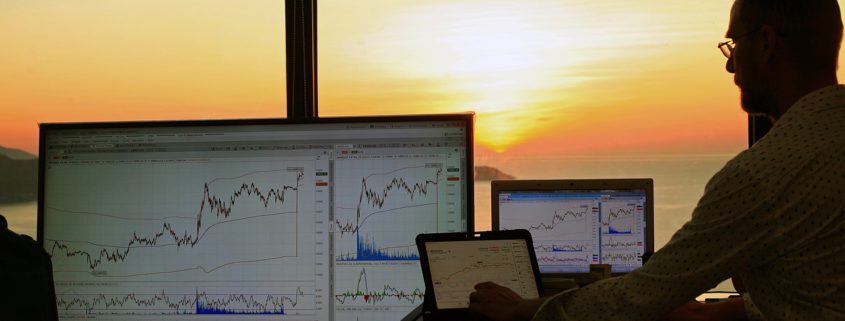Study Investing: The U.S. Greenback as a Protected Haven
Study Investing: What Makes the U.S. Greenback a Protected Haven — And When It Stops Being One
As a result of even the world’s most trusted foreign money has a breaking level.
You’ve most likely heard it earlier than:
“In occasions of disaster, traders rush to the U.S. greenback.”
However… why?
If you happen to’re simply beginning your investing journey, it might sound odd that when international markets panic, everybody immediately desires extra . It’s not as a result of folks wish to buy groceries in New York. It’s as a result of the U.S. greenback is taken into account a “protected haven.”
However right here’s the twist: that security isn’t assured. In truth, former Treasury Secretary Janet Yellen simply warned that some traders could also be beginning to query the security of U.S. property—and the greenback didn’t act like its regular self throughout current market turbulence.
So what precisely makes the greenback a protected haven—and the way have you learnt when that standing could be in danger?
First, what’s a “protected haven” anyway?
In investing, a protected haven is an asset folks flock to throughout uncertainty. It’s the place cash goes to really feel protected.
Consider it like this:
If the worldwide financial system is a stormy sea, the greenback is usually seen as essentially the most dependable lifeboat.
Traditionally, the U.S. greenback earns that belief for a couple of huge causes:
-
The U.S. has the biggest, most liquid bond market on this planet (U.S. Treasuries)
-
The greenback is used within the majority of worldwide commerce and central financial institution reserves
-
The U.S. financial system is comparatively steady and diversified
-
American monetary markets are deep, clear, and extremely regulated
Briefly, when issues go south, the world says, “Simply give me .”
However right here’s the catch: Even lifeboats can leak
These days, one thing uncommon occurred.
Usually, when markets get nervous, we see:
-
Shares fall
-
U.S. Treasury yields drop (as folks purchase bonds)
-
The greenback rises (as international capital rushes in)
However not too long ago, Treasury yields rose whereas the greenback fell—a sign that some traders could also be pulling again from U.S. property, even in a second of stress.
In keeping with Yellen, this shift might mirror deeper considerations:
-
A insecurity in U.S. fiscal coverage
-
Rising debt ranges
-
Political instability or commerce tensions
Which means we’re seeing a stress check of the greenback’s protected haven standing—and it is a teachable second for traders at each degree.
What occurs when the greenback loses its shine?
If international traders cease treating the greenback as the final word protected haven, it might imply:
-
Much less demand for U.S. bonds, which may push yields even greater
-
A weaker greenback, which impacts buying energy and import costs
-
Volatility in rising markets, a lot of which depend on dollar-based funding
-
Shifting capital flows towards different currencies (just like the euro, yen, or Swiss franc)
That does not imply the greenback is immediately unreliable—but it surely does remind us that confidence is a foreign money too.
Why this issues to your portfolio (even if you happen to solely purchase U.S. shares)
Right here’s the place this all connects to you:
-
A weaker greenback can increase U.S. exporters.
Corporations that promote items abroad (assume Coca-Cola or Apple) could profit as their merchandise develop into cheaper in foreign currency echange. -
A stronger greenback can harm commodity costs.
Since oil, gold, and different international commodities are priced in , a rising greenback usually places stress on these markets. -
The greenback can affect inflation.
A weaker greenback makes imports costlier—probably driving up inflation. That may affect Fed coverage, rates of interest, and inventory costs. -
International traders watch the greenback. So do you have to.
Forex tendencies usually lead inventory market strikes. Understanding how the greenback behaves helps you learn broader market sentiment.
So, what ought to newbie traders look ahead to?
Listed here are a couple of easy alerts to trace the greenback’s conduct:
-
DXY Index – A standard measure of the U.S. greenback vs. a basket of different main currencies
-
USD/JPY or EUR/USD charts – Foreign exchange pairs that mirror greenback energy or weak spot
-
U.S. Treasury yields – Typically transfer in tandem with the greenback
-
Feedback from the Fed or Treasury – Coverage alerts that may shift confidence
And bear in mind: the greenback could not transfer quick, however when it does, it often means one thing huge is occurring below the floor.
Backside line: Protected havens are constructed on belief—and belief can shift
The U.S. greenback has earned its standing because the world’s most trusted foreign money, however that belief shouldn’t be everlasting. Whether or not it’s tariffs, political gridlock, or large deficits, traders are all the time watching—and when confidence fades, capital finds new houses.
As a newbie investor, studying how the greenback behaves—and why it issues—offers you an edge. As a result of in occasions of uncertainty, the market doesn’t simply ask “what ought to I purchase?”
It asks, “what can I belief?”
Coming quickly: ForexLive is changing into investingLive.com
We’re increasing to assist traders such as you grasp extra than simply currencies. From shares and bonds to good macro insights, you’ll get the instruments and training it’s worthwhile to make investments with confidence—it doesn’t matter what the greenback is doing.
This text was written by Itai Levitan at www.ubaidahsan.com.
Source link



Leave a Reply
Want to join the discussion?Feel free to contribute!